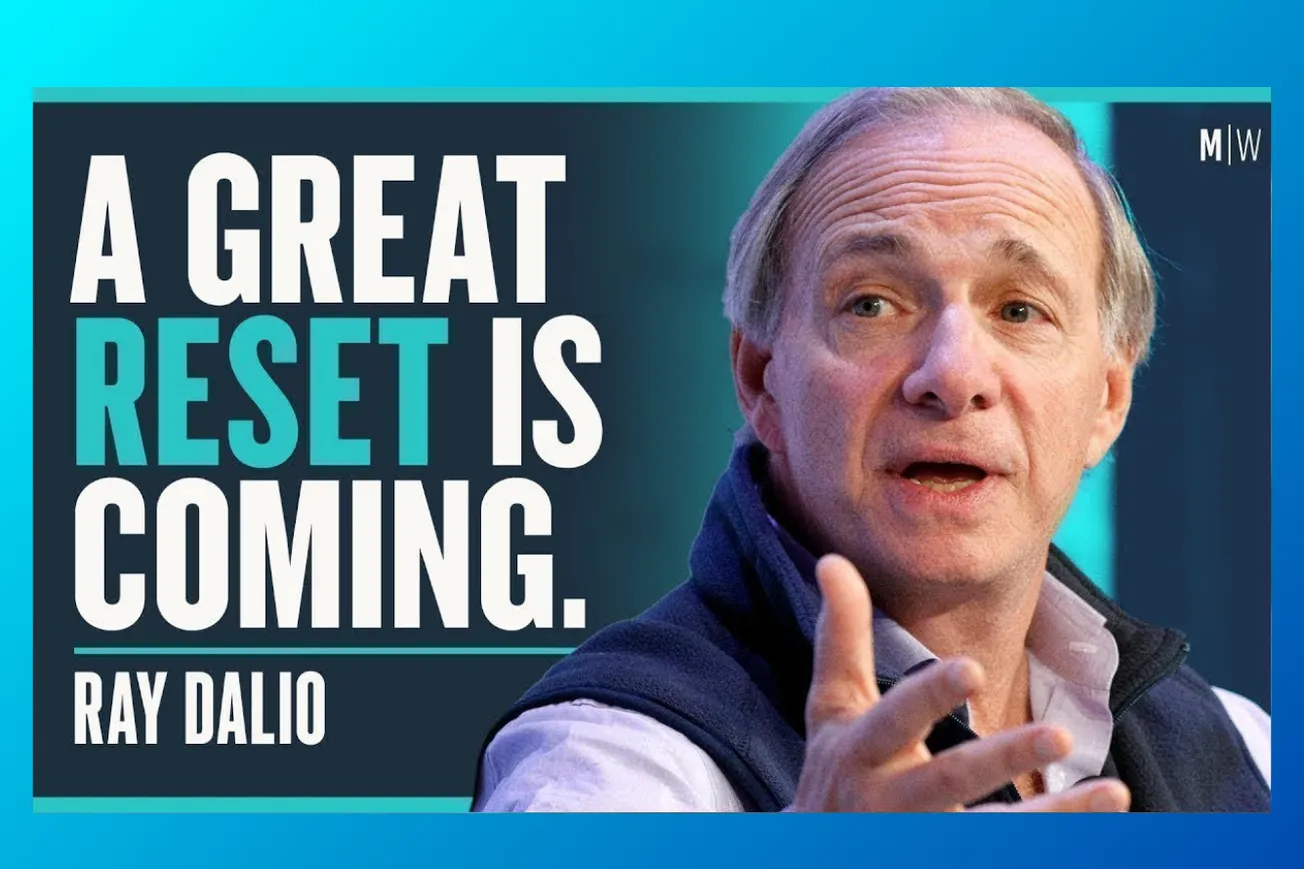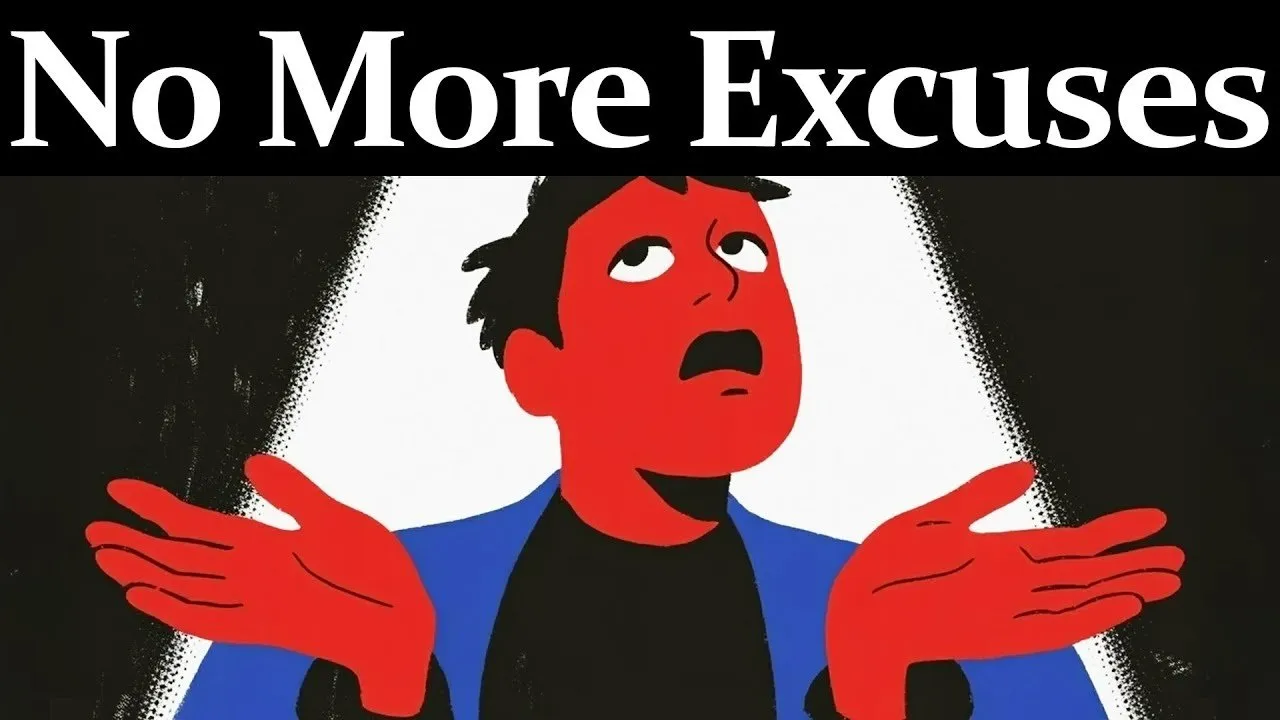Table of Contents
Billionaire investor Ray Dalio warns of three converging crises reshaping America: massive debt creation, internal conflicts over wealth gaps, and rising tensions with China as historical cycles repeat.
Bridgewater Associates founder reveals why current global chaos follows predictable patterns from history, offering stark warnings about America's financial future and actionable strategies for weathering the storm.
Key Takeaways
- How accurate have Ray Dalio's predictions been? His forecasts from two years ago have proven "uncomfortably accurate" as historical cycles repeat exactly as anticipated
- Three major forces mirror the 1930-45 period: massive debt creation, internal wealth conflicts, and great power competition with China
- The US dollar faces declining demand due to excessive debt, international sanctions, and countries seeking currency alternatives for trade
- America sits halfway through a tightening cycle where "dominoes are beginning to fall" across banking, real estate, and corporate sectors
- Young people should focus on understanding their nature, gaining perspective on cycles, and building resilience through continuous learning
- Demographics create massive burdens as declining birth rates force fewer workers to support growing elderly populations worldwide
- Portfolio diversification across four economic quadrants (growth/inflation combinations) protects against any financial environment while maintaining buying power
- Finding community represents the highest correlation with happiness and longevity, surpassing wealth accumulation as a measure of success
Timeline Overview
- 00:00–00:30 — Intro: Brief introduction setting up Ray Dalio's expertise and the scope of economic challenges ahead
- 00:30–07:43 — The Accuracy of Ray's Predictions: How studying 500-year historical cycles enabled "uncomfortably accurate" forecasts of current economic chaos
- 07:43–12:54 — Impacts of a Decreasing Dollar Value: Why foreign demand for dollar debt is declining while supply increases, creating dangerous supply-demand imbalance
- 12:54–15:54 — Different Types of Leaders for Different Times: How warfare demands dominant leaders while peace requires prestigious ones, explaining current political dynamics
- 15:54–20:03 — Are We in a Unique Situation?: Whether current events follow predictable historical scripts or represent unprecedented challenges requiring new approaches
- 20:03–25:45 — How to Be Financially Prepared for the Next Few Years: Portfolio diversification strategy across four economic quadrants to maintain purchasing power regardless of conditions
- 25:45–32:28 — The Crisis of Unproductive People: Educational system failures, wealth gaps, and 7 million prime-age men neither working nor seeking employment
- 32:28–35:31 — Ray's Advice for Young People: Understanding personal nature, gaining historical perspective, and building resilience through continuous learning and adaptation
- 35:31–41:07 — Should We Worry About the Population?: Demographic collapse forcing fewer workers to support growing elderly populations while automation concentrates wealth
- 41:07–45:02 — The Threat of China: Why focusing on internal problems matters more than projecting concerns onto China's demographic and economic challenges
- 45:02–49:28 — Is a 'Soft Landing' Possible?: Banking system vulnerabilities from excessive debt making Fed's soft landing extremely difficult to achieve
- 49:28–54:06 — Can You Benefit From a Recession?: Investment strategies during downturns, diversification importance, and Bitcoin versus gold for portfolio protection
- 54:06–59:52 — Finding Solace in a Tumultuous World: Why community connections trump wealth for happiness and practical steps for maintaining mental health during chaos
The Uncomfortable Accuracy of Historical Patterns
How accurate do you think you've been with your predictions about America and the global economy? Ray Dalio's track record speaks volumes about understanding economic cycles. When asked this question, his response cuts through optimistic narratives: "uncomfortably accurate given the whole picture... it's like watching the movie over and over again."
- His 55-year career as a global macro investor taught him that surprising events often repeat historical patterns from before his lifetime
- What do you think the next few years have got in store for us? Dalio warns that three major forces currently reshaping America exactly mirror the 1930-45 period when previous world orders collapsed
- The Great Depression study enabled Bridgewater to anticipate the 2008 financial crisis through historical pattern recognition
- Current events unfold "according to script" because cause-effect relationships create predictable sequences across centuries
- Historical analysis of 500 years reveals these major cycles typically span 75 years, explaining current timing of disruptions
- Two additional factors amplify current risks: acts of nature (droughts, floods, pandemics) and technological advancement creating wealth concentration
Understanding these patterns provides crucial context for navigating current uncertainty. Dalio emphasizes that "one can see the cause effect relationships that are happening" when viewing events through historical perspective rather than treating them as unprecedented.
Was there anything over the last two years that you didn't anticipate? Is there anything particularly unique about the situation that we're in now? Every cycle brings claims that "this time is different," but Dalio's analysis suggests otherwise. By and large, he hasn't been surprised by recent developments, though he didn't specifically anticipate the Russia conflict timing.
The Three Forces Reshaping Global Power
The convergence of three historical forces creates what Dalio describes as the most significant reshaping of world order since World War II. These aren't random events but predictable consequences of long-term cycles reaching critical inflection points.
- Massive debt creation coupled with money printing to finance deficits mirrors 1930s monetary policy with similar inflationary consequences
- Internal conflicts over wealth gaps represent the largest since the Great Depression, fueling populism across political spectrums
- Great power competition emerges as China challenges US hegemony, creating the most significant international tensions since 1945
- Rising populism produces leaders who "fight to win at all cost" rather than seeking compromise during critical decision-making periods
- Historical precedent shows four democracies became dictatorships during the 1930s to consolidate power for external conflicts
- The foreign enemy dynamic becomes crucial for unifying divided populations, as leaders use external threats to rally domestic support
These forces interact destructively, each amplifying the others' effects. Dalio notes that "it's very very common to try to bring the country together... by having the common enemy" when internal divisions threaten social cohesion.
Dollar Decline and the Global Monetary Shift
What do you think is the likelihood of the meltdown of the dollar? Is America going to be wiped out at some point soon? The US dollar's role as global reserve currency faces unprecedented challenges as countries reduce dependence on dollar-denominated assets. This shift represents more than currency fluctuation—it signals fundamental changes in global economic architecture.
- Foreign holders of dollar debt require interest rates exceeding inflation, but current rates fail to compensate for purchasing power loss
- International sanctions that freeze dollar assets have dramatically reduced global demand for dollar-denominated instruments
- Countries increasingly conduct trade in alternative currencies, reducing need for dollar reserves and creating self-reinforcing decline
- The supply-demand imbalance worsens as America continues running large deficits requiring constant new debt issuance to foreign buyers
- European and Japanese currencies face identical problems with excessive debt and similar financing mechanisms creating synchronized weakness
- Supply chain deterioration from international conflicts accelerates inflation as countries prioritize self-sufficiency over efficiency
Dalio explains that when "you're seeing more transactions take place in other currencies... others want to save in those other currencies because that's how they pay for it." This creates momentum toward dollar alternatives that becomes increasingly difficult to reverse.
Banking System Vulnerabilities and Market Dynamics
What do you think about the Fed's messaging about this soft landing - is that possible? The Silicon Valley Bank collapse revealed systemic weaknesses extending far beyond individual institutions. Dalio identifies this as symptomatic of global banking vulnerabilities created by interest rate cycles and excessive debt accumulation.
- Banks purchased government bonds offering higher yields than deposit rates, but rising interest rates destroyed bond values while deposit costs increased
- Insurance companies, European banks, and Japanese institutions buying US dollar bonds face identical mark-to-market losses if recognized
- Reduced demand for new government debt coincides with increased supply from deficit financing, creating dangerous supply-demand imbalances
- Credit contraction affects commercial real estate, venture capital, private equity, and heavily indebted companies as borrowing costs surge
- The dominoes effect spreads through interconnected financial systems as institutions reduce lending to preserve capital
- Federal Reserve faces impossible choice between allowing deflationary collapse or printing money to ease debt burdens
"I think you're in the part of the cycle where you've had the tightening and the dominoes are beginning to fall," Dalio warns, suggesting current problems represent early stages of broader financial system stress rather than isolated incidents.
Demographic Collapse and Economic Burden
Should we worry about the population decline and future demographics? Global demographic trends create unprecedented economic challenges as declining birth rates force smaller working populations to support growing elderly cohorts. This represents a fundamental shift in economic mathematics affecting every developed nation.
- China's one-child policy created extreme burden where "a married couple has four old adults that they have to take care of"
- South Korea's 0.78 birth rate and Japan's similar decline demonstrate how demographic collapse spreads across developed Asian economies
- Productivity must increase faster than demographic burden, requiring significant technological advancement to maintain living standards
- Automation and AI could address labor shortages but create wealth concentration problems as fewer people control productive capacity
- Redistribution becomes critical challenge as technology enables small groups to generate massive economic value while displacing workers
- Social programs struggle under demographic pressure as fewer workers fund systems designed for different population structures
The demographic burden extends beyond economics into social stability. Dalio notes this creates "time and money" costs that reduce productivity while requiring resources from shrinking working populations to support expanding dependent cohorts.
What would you tell young people at the moment? What advice would you give them? Navigating these demographic and economic shifts requires specific strategies for younger generations who will bear the brunt of these transitions.
Investment Strategy for Turbulent Times
How can people best prepare themselves financially for the next few years? Dalio advocates for systematic portfolio diversification based on understanding how different assets perform across varying economic environments. His approach focuses on maintaining purchasing power regardless of which economic scenario unfolds.
- Build foundational portfolio securing basic well-being before taking additional investment risks beyond essential needs
- Create balanced exposure across four economic quadrants: rising growth, falling growth, rising inflation, falling inflation scenarios
- Allocate 25% of investment risk to each quadrant to eliminate bias toward any particular economic outcome
- Bonds perform well during low growth and low inflation but poorly when either growth or inflation exceeds expectations
- Commodities and gold provide inflation protection while stocks benefit from higher-than-expected growth in low-inflation environments
- Maintain twice the minimum required amount to handle potential 50% portfolio declines during severe market stress
Testing this approach "going back actually to 1900" demonstrates its ability to "maintain... actually increase your buying power" across various historical periods. This methodology prioritizes capital preservation over maximum returns during uncertain times.
Let's say that we do hit quite an aggressive recession - what are some of the ways that people could even look to benefit financially from that happening? Beyond basic portfolio protection, economic downturns create specific opportunities for prepared investors who understand market cycles.
Community Over Wealth: Redefining Success
Where should people go to find some solace in this difficult world? Dalio challenges conventional success metrics, emphasizing research showing minimal correlation between wealth and happiness beyond meeting basic needs. Community connections provide the strongest predictor of both happiness and longevity.
- Studies consistently show no correlation between money levels and happiness once basic misery-prevention needs are met
- Community relationships represent the highest source of happiness and significantly impact longevity more than exercise, stopping smoking, or reducing alcohol
- Money's intrinsic value lies only in purchasing power, with diminishing marginal benefits as wealth increases beyond necessities
- Most valuable life experiences—friends, family, nature, meaningful relationships—cost little or nothing to access
- Wealth obsession becomes unhealthy when it dominates decision-making rather than serving as tool for well-being
- Success redefinition toward relationships and experiences provides resilience during economic uncertainty and social upheaval
"Most of the good things in life are not expensive," Dalio observes, suggesting that focusing on community and relationships provides both immediate satisfaction and protection against external economic volatility.
Common Questions
Q: What makes Ray Dalio's predictions so accurate?
A: He studies 500-year historical cycles to identify repeating cause-effect relationships that most people haven't experienced before.
Q: How serious is the threat to the US dollar?
A: Declining foreign demand combined with increasing supply from deficits creates supply-demand imbalance threatening reserve currency status.
Q: Should investors choose Bitcoin or gold during economic uncertainty?
A: Dalio prefers gold for its historical reliability and central bank acceptance, while Bitcoin remains volatile and government-unfriendly.
Q: What's the role of Bitcoin or cryptocurrency in the current economy? A: While some investors turned to crypto during the Silicon Valley Bank crisis, Dalio remains skeptical about cryptocurrency as a reliable store of value compared to traditional alternatives like gold.
Q: What's the biggest mistake people make during economic uncertainty?
A: Focusing too much on external threats rather than building personal resilience through diversification and community connections.
Q: How can young people prepare for economic instability?
A: Understand personal nature, gain historical perspective on cycles, build adaptability, and prioritize learning over wealth accumulation.
Ray Dalio's analysis reveals that current global instability follows predictable historical patterns rather than representing unprecedented chaos. The convergence of debt cycles, internal conflicts, and great power competition creates challenges requiring both systemic understanding and personal preparation strategies.
Conclusion
Ray Dalio's comprehensive analysis reveals a sobering truth: America stands at a critical inflection point where three massive historical forces converge simultaneously. The combination of unprecedented debt levels, the largest internal wealth conflicts since the Great Depression, and rising great power competition with China mirrors the exact conditions that reshaped global order during 1930-1945. This isn't random chaos—it's a predictable historical cycle playing out according to patterns documented across 500 years of economic history.
The Current Reality: The "uncomfortably accurate" fulfillment of Dalio's predictions demonstrates that we're experiencing the logical consequences of previous decisions rather than surprising events. The US dollar's declining global demand, banking system vulnerabilities from interest rate cycles, demographic collapse creating unsustainable dependency ratios, and political polarization producing "fight to win at all cost" leadership all represent expected stages in this historical progression.
Why This Matters: Understanding these patterns provides crucial advantages over those treating current events as unprecedented. When you recognize that "dominoes are beginning to fall" in a predictable sequence, you can prepare for subsequent stages rather than reacting to each crisis as an isolated shock. The cycle isn't destined, but it's "difficult to take off track" because each stage creates logical consequences for the next.
Practical Implications
Financial Preparation:
- Build four-quadrant portfolios allocating 25% of risk across rising/falling growth and rising/falling inflation scenarios to maintain purchasing power regardless of economic outcomes
- Maintain twice minimum required savings as buffer against potential 50% portfolio declines during severe market stress periods
- Prioritize gold over Bitcoin for inflation protection given government hostility toward cryptocurrency and gold's proven reliability across historical cycles
- Avoid timing markets and instead focus on systematic diversification that performs well across multiple economic environments
- Think in real purchasing power terms rather than nominal dollar amounts when evaluating investment returns
Personal Resilience Building:
- Focus on community relationships over wealth accumulation, as studies show connections provide the strongest correlation with happiness and longevity
- Understand your personal nature through tools like personality assessments to navigate challenges aligned with your strengths
- Gain historical perspective on cycles to reduce anxiety about current events and build confidence in your ability to adapt
- Develop marketable skills that remain valuable across different economic environments rather than depending on single industries or employers
- Build local networks that provide support systems independent of broader economic or political stability
Mental Health Protection:
- Limit financial media consumption that increases stress without providing actionable information for your specific situation
- Spend time in nature and engage in activities that don't depend on economic conditions for enjoyment
- Focus on basic needs security (shelter, food, relationships) rather than maximizing wealth beyond necessity
- Practice perspective remembering that "most people remain employed" during depressions and "most people don't die" during wars
- Redefine success toward relationships, experiences, and personal growth rather than purely financial metrics
Long-term Positioning: The most critical insight from Dalio's analysis isn't predicting exact timing of systemic breakdown, but recognizing that current patterns follow historical precedent and preparing accordingly. Those who understand cycles and build resilience across multiple dimensions—financial, social, psychological, and practical—position themselves to navigate even major historical transitions successfully.
As Dalio emphasizes, while systemic changes create challenges, individual preparation and proper perspective enable successful navigation of uncertainty. The goal isn't predicting the future perfectly, but building antifragility that benefits from volatility rather than being destroyed by it.
The path forward requires balancing realistic preparation with maintaining quality of life, understanding that even during major historical transitions, most people adapt and continue building meaningful lives within whatever new normal emerges.





